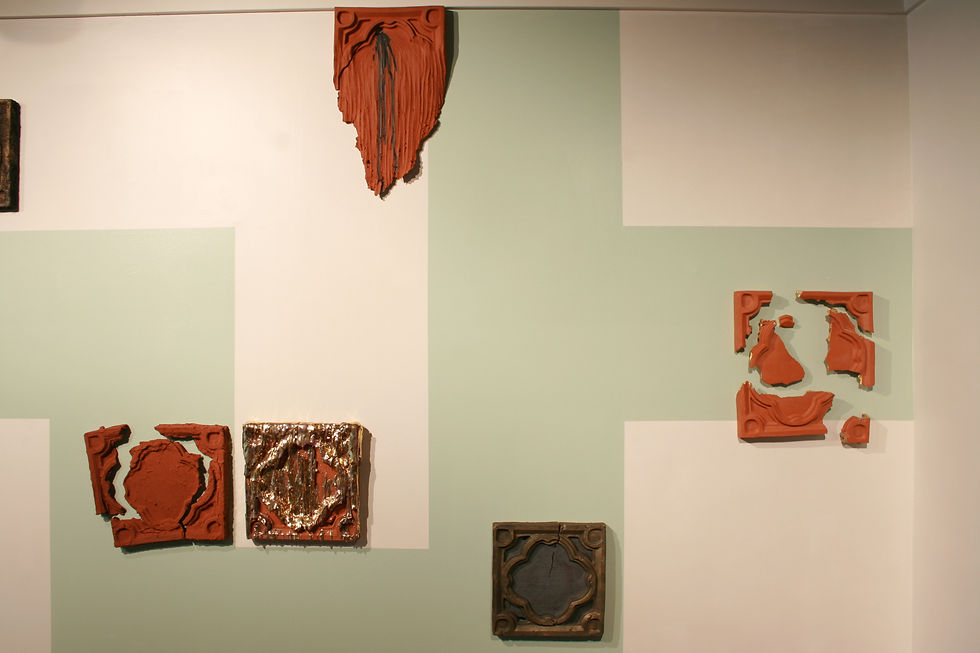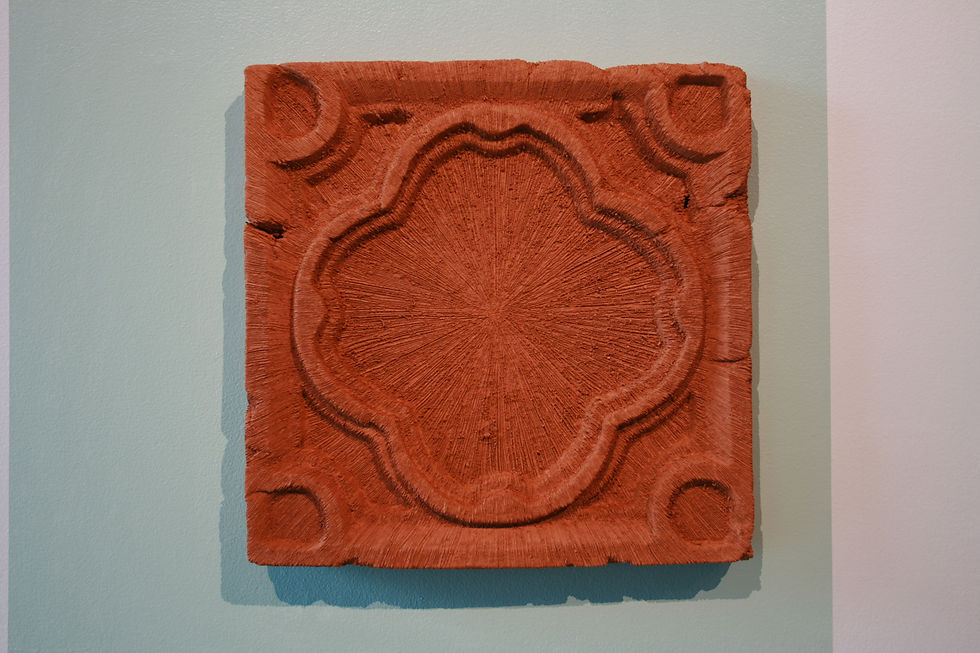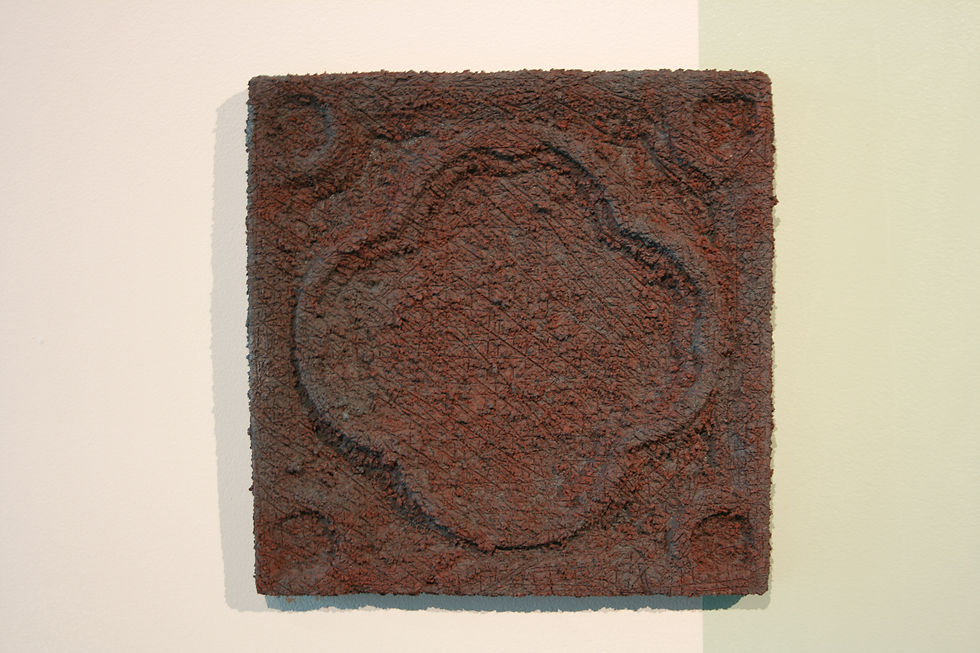MARY O'MALLEY
Reliquary
Nihilism Tiles
2022



















































Material: Lizella Clay, Glaze, Luster, Slip, Underglaze
Dimensions: (varied) 13.75” x 13.75” x 2”
The Nihilist Tiles emerged from a period of experimentation and defiance following the completion of the Stations series. Having worked within the narrative and formal structure of that earlier project, this body of work rejects prescription in favor of immediacy and material intuition. The tiles were created through an open-ended process—allowing clay, glaze, and oxide to behave unpredictably—embracing accident, fracture, and collapse as active compositional forces.
This transitional process carried an element of nihilism: a philosophical stance that questions the existence of inherent meaning or absolute truth. Contrary to popular interpretation, Nietzsche’s concept of active nihilism describes not despair but a courageous obliteration of meaning as a precondition for renewal. The Nihilist Tiles are the products of that creative act of negation—born from dismantling formal and conceptual order to make space for something new.
The making process reflects this philosophy both materially and conceptually. An image that has lingered in my mind since graduate school resurfaced: a 1617 cosmograph described as “a revolutionary depiction of a black void prior to the light of creation.” I used this as a loose conceptual anchor and allowed the work to evolve intuitively. These tiles—cracked, glazed, lustered, and oxidized—became meditations on both collapse and renewal. Solid slabs of clay were intentionally overfired, allowed to warp, fracture, or even collapse in the kiln. Cracks, glazes, and metallic lusters were not concealed but celebrated as evidence of entropy and chance. In relinquishing control, the process became a dialogue with destruction, an acceptance of failure as form that embodies the logic of active nihilism: that through breakdown, the possibility of renewal arises.
Visually, the tiles evoke religious imagery and themes that recur throughout the larger body of work—halos, voids, dripping wax, and celestial forms. Reading Ronald Kuchta’s essay “Major Themes in Contemporary Ceramic Art” (in The Persistence of Craft, 2001), I reflected on clay’s primal role as a tool of communion between the human and elemental worlds. The Nihilist Tiles are not only about decay and nature reclaiming form—a familiar thread in my work—but also about the futility and comfort of belief itself. They embody a tension between reverence and cynicism, mirroring the oscillation between faith and detachment.
Viewed within a broader context, this cycle of destruction and renewal mirrors the instability of larger societal structures—the crumbling of institutions, beliefs, and systems once assumed permanent. The Nihilist Tiles echo the precariousness of that moment and the paradoxical hope embedded within it: that collapse may clear ground for new frameworks of meaning. Through their fractured yet luminous surfaces, these works consider the simultaneous undoing and reimagining of the world—a meditation on the generative potential of endings.






















